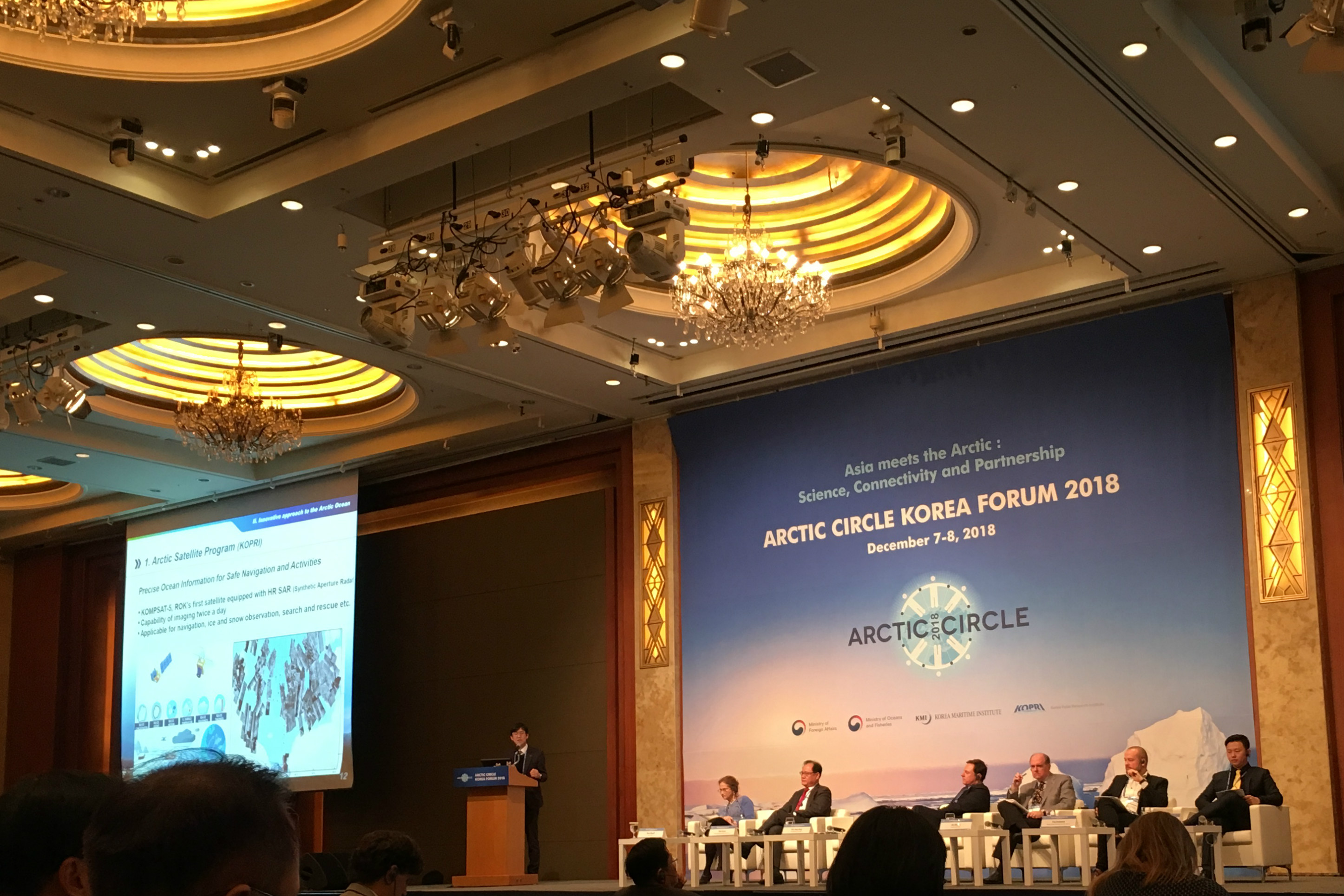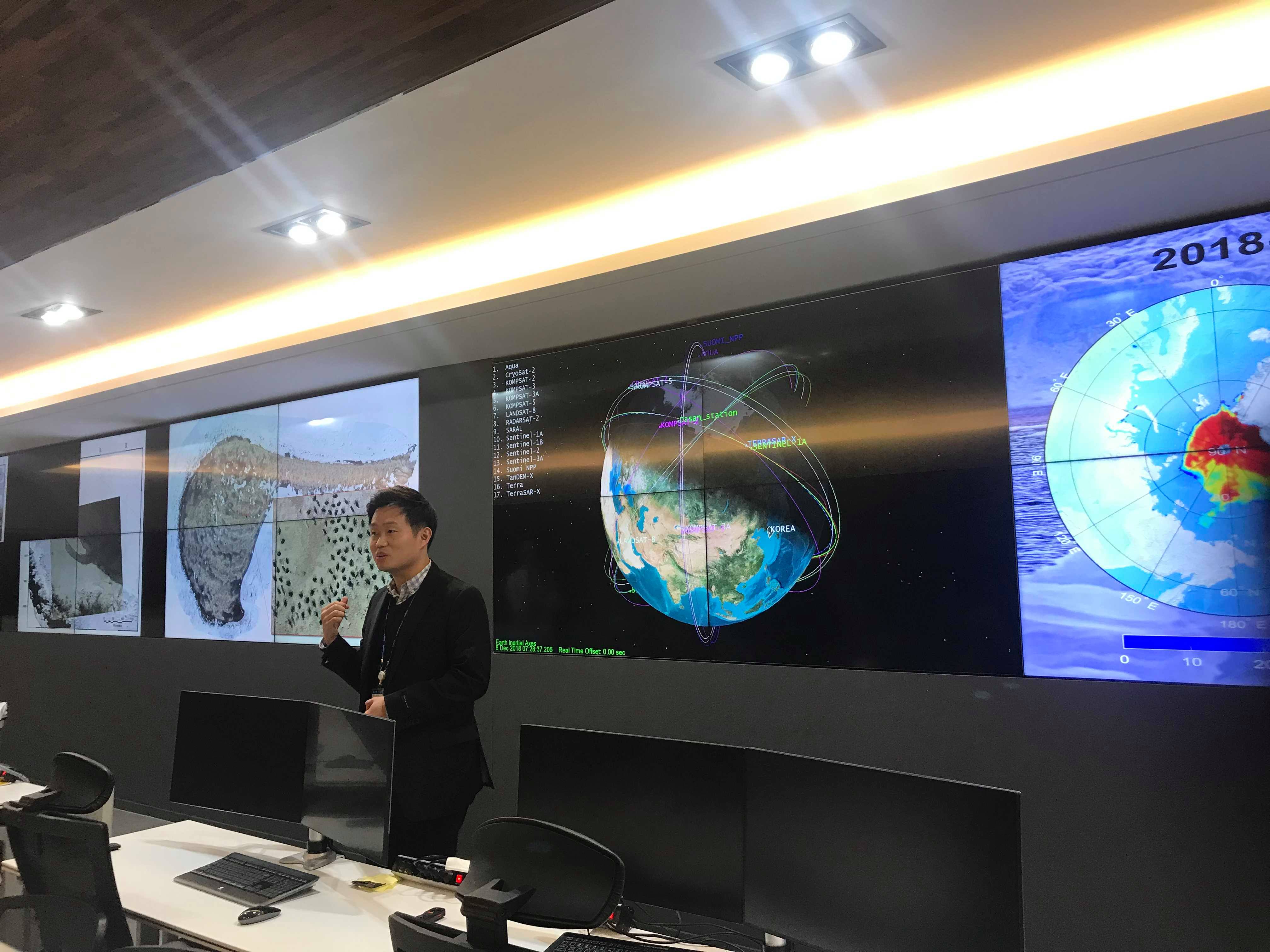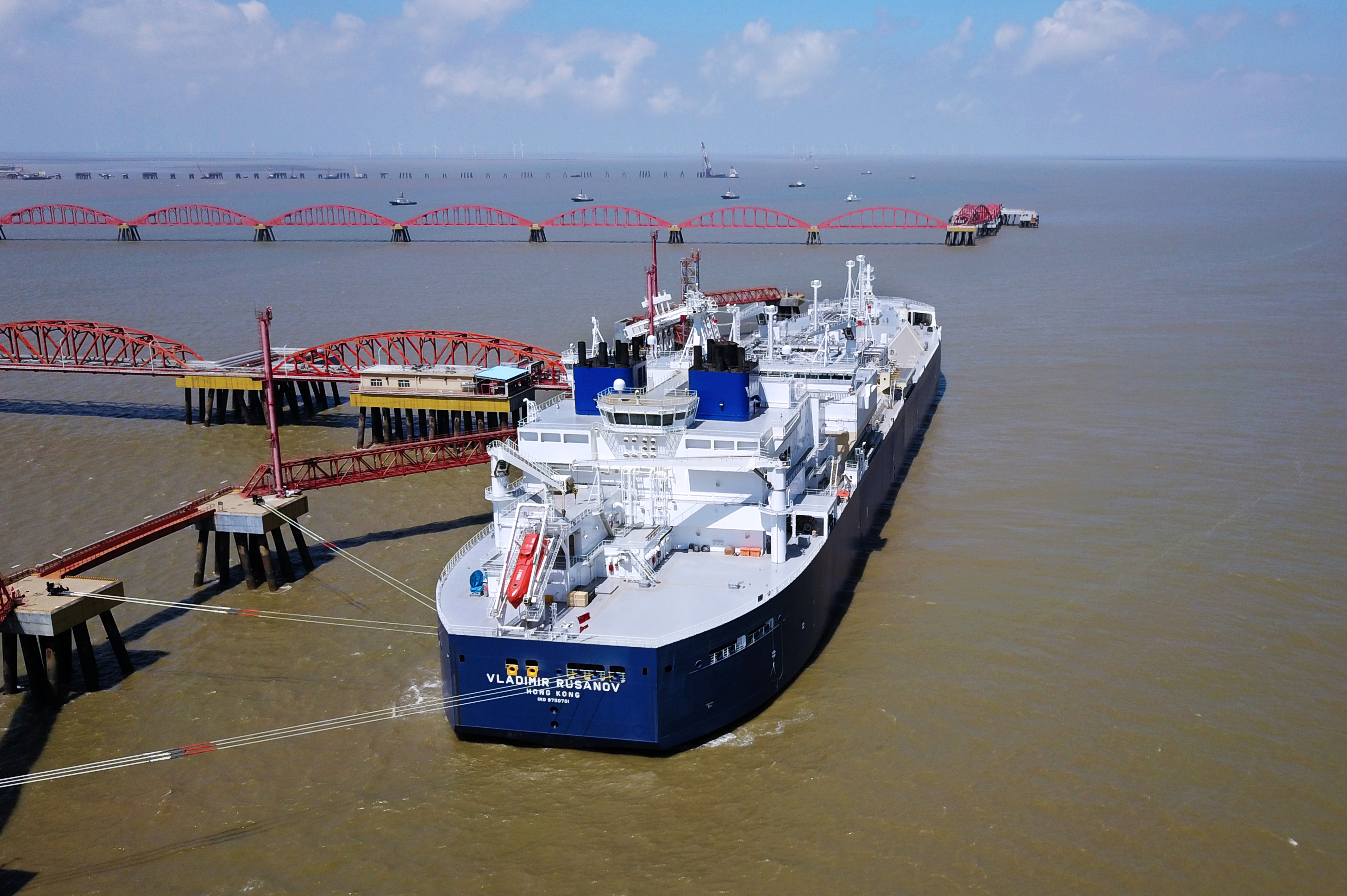Why Asia and Europe are positioned to define the future of the Arctic
What an Arctic gathering in South Korea signals about the forces shaping the region.

When China released its Arctic policy white paper in January, the move prompted a slew of think pieces in Western media about the role of Asia in the Arctic.
But the truth is that the major East Asian powers have already been engaged in the Arctic for some time (including, since 2013, as Arctic Council observers). And despite many complexities, you can understand a lot about this engagement simply by considering two basic facts. First, Europe and Asia — and particularly East Asia — far outstrip the rest of the planet in terms of economic output. And second, the retreat of Arctic sea ice will allow those regions and their massive economies to connect as never before.
In fact, they already are.
That much was on display earlier this month in Seoul, where South Korea became the first East Asian country to host a regional forum of the Arctic Circle Assembly. (Singapore, in Southeast Asia, hosted an earlier spin-off conference in conjunction with the Iceland-based Arctic Circle organization, which has positioned itself as the leading unofficial platform for global Arctic dialogues.)

If at first glance South Korea may not seem like the most likely nation to play a key role in Arctic affairs, a scratch or two beneath the surface reveals a deepening involvement.
South Korea is a maritime nation, several of its diplomats pointed out over the course of the gathering, and that alone gives it an interest in a nearby region where shipping is becoming increasingly important.
But it’s a combination of shipping and technological expertise that has already given South Korea a specific and significant foothold in the Arctic: It dominates the market for constructing new liquefied natural gas tankers, including a new generation of the ice-breaking LNG carriers that are key to developing the region’s natural gas — technology that was a prime showcase at the Seoul event. (Despite losing market share, China and Japan aren’t all that far behind; the Chinese-built gas condensate tanker Boris Sokolov recently went into service, and several South Korean-built ice-classed tankers are owned jointly by Chinese and Japanese companies.)
South Korea, in turn, is a major market for the Arctic’s gas.
According to one estimate presented during the conference, the nation consumes the amount of LNG carried in one of those tankers in just a single day. That means that even if it takes aggressive steps to curb fossil fuel use, it will still need to new gas supplies in the short and medium terms.
So will China and Japan.
Both the newly emerged economic giant of China and the established powerhouse of Japan, are also deeply engaged in the Arctic.
All three have diplomats with a title along the lines of ambassador to the Arctic. All three are active observers at the Arctic Council. All three took part in talks that eventually led to the first binding treaty in the region — a moratorium on unregulated commercial fishing in the Central Arctic Ocean’s international waters. The three nations even have their own trilateral Arctic forum, and China is set to host an Arctic Circle of its own in the spring.
And all three also have robust polar research programs — such as those on display for participants at the Korea Polar Research Institute in Incheon — that demonstrate the extent to which the Arctic has become globally significant.

Put more simply, Korea, China and Japan are all acting in ways that show they have a clear sense of the importance of the Arctic to their nations’ future, and are acting accordingly.
But perhaps just as telling as South Korea’s eagerness to host an Arctic forum was the eagerness of European participants to attend.
Marie-Anne Coninsx, the European Union’s ambassador at large for the Arctic, emphasized the EU’s desire for closer ties to the region, saying that “better and more connectivity is in the interest of both the EU and Asia.”
Coninsx touted the EU’s recently released Asia connectivity strategy. Some coverage of that policy, released this fall, framed it as an alternative to China’s Belt and Road Initiative (which includes a “Polar Silk Road”), but in response to an audience question, Coninsx said the EU’s strategy isn’t meant to compete with China’s planned infrastructure investment — and in fact could complement it.
Coninsx wasn’t the only European talking up connections to Asia. Several European nations — some with Arctic territory, some without — were represented in one way or another.
Of course, the presence or absence of diplomats or more informal representatives at any given conference isn’t the only measure of a nation’s engagement in the Arctic.
There wasn’t a single representative from Russia on stage at the South Korea conference, yet the Northern Sea Route — which it controls — and the fossil fuel resources being developed in Russia’s Arctic either played a central role in each conversation or loomed just offstage. With more Arctic territory than any other nation and a strategic location between the giant economies of Europe and Northeast Asia, Russia has far more to gain from the Arctic’s transformation into a major trade route than any other country.
In an offhand remark, Gao Feng, China’s special representative for the Arctic, said it was Russia that initially approached China to request that the Northern Sea Route be added to China’s Belt and Road initiative (a “Polar Silk Road” was only added to the initiative with the release of the China’s policy paper), not the other way around.

Russia already benefits from Chinese investment in the Arctic (two state-controlled firms own a stake of about 20 percent in the Yamal LNG project), and it stands to benefit further. China National Petroleum Corporation is in talks to invest in Novatek’s forthcoming Arctic LNG 2 project (as is South Korea’s Kogas), and Novatek has plans to partner with shippers Sovcomflot and COSCO to form a company that would serve the new LNG project.
Moreover, its ambitious infrastructure and extraction plans call for massive further investment beyond those two LNG projects, yet only a fraction of that investment will come from public sources.
Meanwhile in an Arctic that’s increasingly realigning along a European-Asian axis, the North American Arctic with its less reliably navigable shipping routes and lack of infrastructure — and its position away from the main Europe-Asia route — could quickly find itself sidelined.
If the U.S. and Canada do increasingly find themselves confined to the peripheries, it will not be because they lost an imagined scramble for resources, though. It will be, at least in part, because geography conspired against them. Even then, they could play significant roles — just not necessarily the ones the U.S., at least, as a global superpower is used to playing.
In a future version of the Arctic dominated by European and Asian trade along Russian routes (and powered by Russian gas), the U.S. and Canada would still be important, but primarily as participants in the Arctic Council and in agreements such as the recent one obliging the coast guards of Arctic countries to aid one another in emergencies, and the high seas fishing moratorium, as well as contributing to international scientific efforts in the region.
It’s true that key shipping lanes, such as those through the Bering Strait — and any future ports along Alaska’s western coasts — would see more activity from Eurasian-bound vessels, while long-stranded gas deposits in the region might also attract investment — or at least more interest. And eventually, as Canada’s Northwest Passage becomes a more reliable transit route, it too would see more Europe-Asia shipping traffic. But, in the short term at least, North America could see its role in the Arctic limited to working alongside other nations in the region more as partners and less as regional powers.
That’s not necessarily a bad thing.
As Coninsx, the EU Arctic ambassador, pointed out as the conference drew to a close, “The Arctic is one of the most challenging places in the world; it’s good to have friends.”
Indeed.